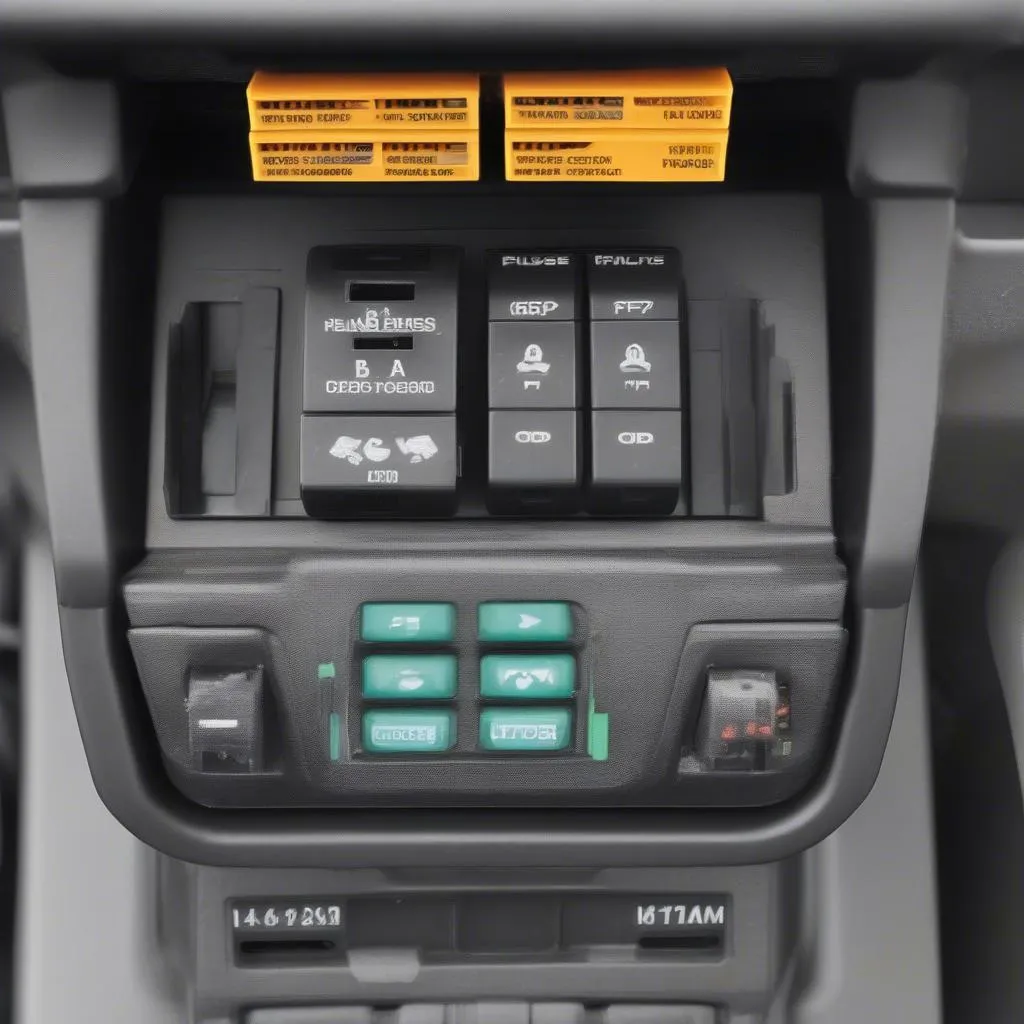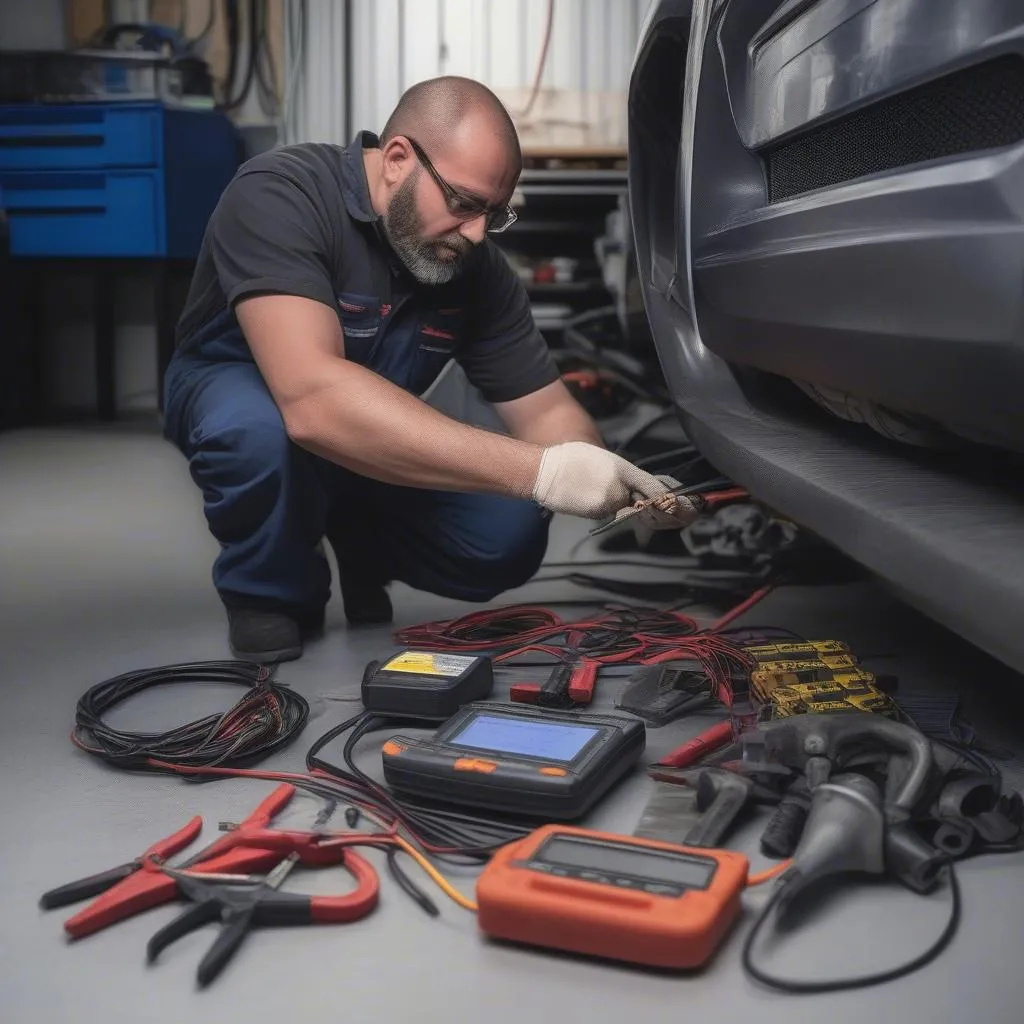“My check engine light came on yesterday, and I tried to use my OBD scanner, but it won’t connect to my 2009 Honda Pilot!” Sound familiar? This is a frustrating situation that many car owners face. You want to diagnose the problem yourself and maybe even save some money, but this pesky OBD port issue is holding you back. Don’t worry; we’re here to help! This article will dive into the common reasons why your 2009 Honda Pilot OBD port might not be connecting and provide you with practical solutions.
Understanding the Issue: Why Won’t My OBD Scanner Connect?
Before we jump into solutions, let’s understand what the OBD port is and why it might be acting up. The OBD, or On-Board Diagnostics, port is like your car’s data center. It holds a wealth of information about your engine’s performance, emissions, and other vital systems.
When you plug in your OBD scanner, it’s like connecting your car to a doctor’s diagnostic equipment. The scanner retrieves the error codes stored in your car’s computer, allowing you to understand what’s going on under the hood.
Here’s where things get tricky. When your OBD scanner can’t connect, it’s often not the port itself that’s the problem, but something interrupting the flow of information.
Common Culprits: What’s Blocking the Connection?
-
Blown Fuse: Think of fuses as safety guards for your car’s electrical circuits. A blown fuse, often caused by a power surge, could be the culprit behind your OBD port connection issues. Check your owner’s manual to locate the fuse box and the specific fuse related to the OBD port.
-
Faulty OBD Scanner: Sometimes the simplest answer is the right one. Your OBD scanner itself could be faulty. Try connecting it to another vehicle to rule this out. “Always ensure you’re using a scanner compatible with your car make and model,” advises automotive expert Michael Thompson, author of “The Complete Guide to Automotive Diagnostics”.
-
Loose or Damaged Wiring: Over time, the wiring connecting your OBD port can become loose, damaged, or even corroded. This can disrupt the flow of data between the port and your scanner.
-
Software Glitch: Like any computer system, your car’s onboard computer can experience software glitches that affect the OBD port’s functionality.
Troubleshooting Your Connection Issues
-
Check the Fuse: Refer to your owner’s manual and locate the fuse box (usually under the dashboard or hood). Identify the OBD port fuse and inspect it for any signs of damage or a broken filament. Replace it with a new fuse of the same amperage if necessary.
-
Test Your OBD Scanner: As mentioned earlier, connect your scanner to another vehicle to see if it works correctly. If it doesn’t, the scanner is likely the problem. Consider replacing it with a reputable brand compatible with your 2009 Honda Pilot.
-
Inspect the OBD Port: Take a close look at the port itself. Look for any bent or damaged pins, debris, or corrosion. Gently clean the port with compressed air or electrical contact cleaner.
-
Check for Loose or Damaged Wiring: This step is best left to a professional, especially if you’re not comfortable working with car electronics. A mechanic can use a multimeter to test the continuity of the wiring harness connected to the OBD port.
-
Reset the Car’s Computer: Disconnecting the battery for a few minutes can sometimes resolve software glitches. However, this should be a last resort, and you’ll need to reset your radio presets and other personalized settings afterward.
FAQs: Addressing Common Questions
Q: I’ve checked everything, and my OBD port still won’t connect. What should I do?
A: It’s time to call in the professionals. A qualified mechanic, like those at your local Honda dealership or a trusted auto repair shop, can diagnose the issue more thoroughly and perform any necessary repairs.
Q: Can I drive my car if the OBD port isn’t working?
A: While a malfunctioning OBD port itself won’t prevent your car from running, it could indicate a more serious underlying electrical issue. It’s best to get it checked out sooner rather than later.
Q: How often should I check my OBD port?
A: It’s good practice to inspect your OBD port periodically for any signs of damage or debris. You should also check it if you experience any issues with your car’s electronics or if your check engine light comes on.
 2009 Honda Pilot Fuse Box Diagram
2009 Honda Pilot Fuse Box Diagram
Don’t Let a Faulty OBD Port Leave You Stranded
Remember that frustrating feeling of your OBD scanner not connecting? We’ve all been there. But armed with the knowledge from this guide, you’re now equipped to tackle this common car issue head-on. Whether it’s a blown fuse or a loose wire, most of these problems are easily fixable.
 Car Diagnostic Test
Car Diagnostic Test
Still, don’t hesitate to seek professional help if you need it. A reliable mechanic can save you time, frustration, and potentially costly repairs down the road. And remember, regular maintenance and inspections are key to keeping your 2009 Honda Pilot running smoothly for years to come.
Need Help with Your Diagnostics Tool Setup?
We’re here to help! Contact us on Whatsapp: +84767531508 for expert support in setting up your diagnostic tools. Our team of automotive specialists is available 24/7 to assist you.